Speaker
Description
Bioactivity is one of the key indicators of implant coating quality of and their suitability in bone disease treatment. In vivo it lies in the ability of a certain material to form strong and stable bonds with living tissues. While for its evaluation in vitro, simulated body fluid tests are the most commonly used, based on immersion of a test sample in the environment with physiological conditions and assessment of hydroxyapatite layer growth rate on its surface [1].
The history of bioactive coatings began right after the rise of implantology and until this time many important discoveries related to their fabrication have been made. Numerous studies were devoted to the application of different bioactive compounds, mainly calcium phosphates, on the metal surfaces, using both the solid particles themselves, as well as indirectly in form of solutions, suspensions and gels [2]. Nevertheless, the search for new, simpler and more rational technologies nowadays remains relevant, opening wide opportunities for still few studied, but promising methods, one of which is plasma electrolytic oxidation (PEO).
PEO is an electrochemical procedure that implies interactions occurring between metallic anode and electrolyte at increased voltages, typically 200 V or higher. Under these conditions, short-lived sparks emerge, which, accompanied by oxygen and heat release, cause resolidification and melting of the anode surface and ultimately lead to formation of porous oxide layer. By adding calcium phosphate particles to the electrolyte, it becomes possible to incorporate them into resulting composite and subsequently modify its physicochemical properties, including bioactivity.
It is believed that the use of crystalline calcium phosphate particles for production of implant coatings is preferred, since the biological form of hydroxyapatite, the main inorganic component of mammalian solid tissues, has a crystalline structure rather than amorphous. Indeed, higher crystallinity is accompanied by better adhesion and proliferation of cells on the surface, as well as by lower coating degradation rate [3]. As a result, researchers when working with well-known coating methods successfully rely on this principle.
Howbeit, the findings of this study allow us to declare that specifically for PEO method utilization of amorphous particles is more expedient, contributing to superior implant coating characteristics against crystalline ones. As confirmed by comprehensive comparison of various physicochemical parameters, it was concluded that amorphous particle incorporation results in calcium-richer bioactive oxide layer. Lower density, less pronounced shape and increased specific surface area are supposed to be the factors that allow these particles to get effieciently incorporated.
References:
[1] Samavedi, S., Whittington, A.R., Goldstein, A.S. Acta Biomaterialia, 2013, 9, 8037-8045.
[2] Jaafar, A., Hecker, C., Árki, P., Joseph, Y. Bioengineering, 2020, 7, 127.
[3] Roy, M., Bandyopadhyay, A., Bose, S. Surf. & Coat. Tech., 2011, 205, 2785-2792.

